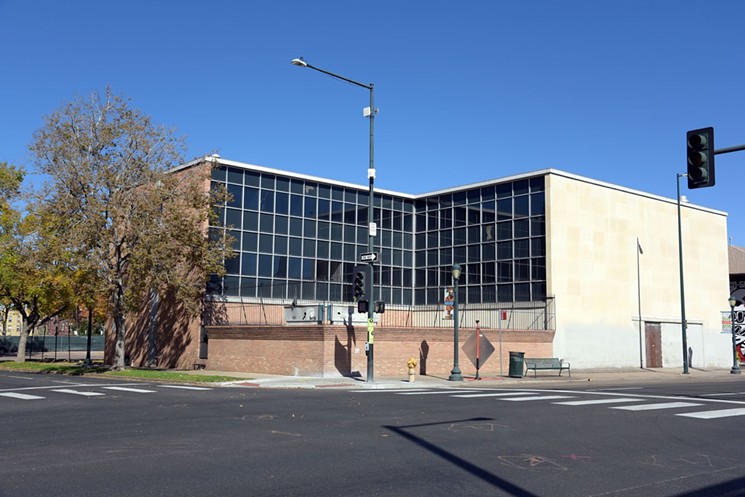On November 7 — or now, if you vote by mail-in ballot — Denver residents will decide if they want to approve nearly a billion dollars’ worth of bond measures, the heftiest general obligation bond proposal in the city’s history.
The GO Bond package, billed as “a plan to repair and improve Denver’s infrastructure,” is broken up into seven categories, labeled 2A through 2G: transportation and mobility systems; cultural facilities, which include the city’s biggest museums, the Denver Botanic Gardens, the Denver Zoo and the Denver Center for the Performing Arts; Denver Health, which would get a $75,000,000 outpatient ambulatory center; the public-safety system, which would improve and replace some police headquarters and fire stations; libraries; parks and recreation; and the public facilities system. They are listed individually on the ballot, so that voters can pick and choose.
Denver started using bonds in the 1940s to pay for projects like airports, hospitals, recreational facilities and public libraries. In the nearly seventy years that the city has taken bond measures before voters, only one proposal — a $325,000,000 justice-center bid in 2001 — was rejected. The last bond project, the $549,730,000 Better Denver Bond Program, passed in 2007. Some projects are still in the works. (You can track their progress at denver.org.)
The GO Bond’s boosters have touted the fact that approving the measure won’t raise property-tax rates; the city has seen an increase in property values, which allows for the new debt of $937 million without triggering an increase to tax rates, says Courtney Law, communications director at the Department of Finance.
After numerous committees submitted their wish lists, Denver City Council unanimously approved the final GO Bond project that’s on the ballot. There is no formal campaign against it, and the Denver Elections Division reports receiving just a handful of complaints from residents. Meanwhile, Our Denver, the formal campaign for the GO Bond, raised $2,191,428.72 through October 5 and is filling the airwaves and mailboxes with advertisements hyping the GO Bond components. “We need ’em all,” says Mayor Michael Hancock in a TV ad.
But while the bond proposal is supposed to be forward-thinking, many projects would address problems created by recent history, such as Denver’s exploding population over the past ten years and the opioid crisis. The whole package also raises philosophical questions about Denver’s future and how, exactly, we’ll get there, down to the dollar.
To see where Denver might be headed, we examined some of the projects included in the GO Bond. We'll roll out our stories about the Bond all week. Here, we examine 2C and 2D.
2C: Set to Reach Capacity by 2019, Denver Health Is Facing a Health Crisis
Without expanded outpatient services, Denver Health anticipates that it will reach capacity, or about 560,000 visits, by 2019 or sooner. But even if the bond measure that would cover a new $75,000,000 outpatient ambulatory center passes, the proposed 272,000-square-foot facility wouldn’t open until late 2019 or early 2020.
“We’re already trying to figure that out,” says Simon J. Hambidge, Denver Health’s chief ambulatory officer.
Next to roads, nothing has felt the weight of the city’s population growth more than Denver Health. The “safety-net hospital” for the city and county serves a quarter of the population, and most patient incomes are below the federal poverty line. In 2006, the hospital saw 320,415 primary-care visits and 57,223 specialty-care visits; last year, those numbers increased to 482,656 and 216,616, respectively.
Denver Health’s relationship with the City of Denver is complicated. After divesting in 1997, the hospital became a “political subdivision of the state,” says hospital spokesman Josh Rasmussen, but its eleven-member board of directors is appointed by the mayor of Denver. While it is no longer technically under Denver’s jurisdiction, the hospital has contracts with the city to provide health services, including Emergency Medical Services, health care to the city jail and a non-medical detox facility.
Not only is Denver Health’s patient roster growing, but the kinds of services needed are changing. Ten years ago, Denver Health’s methadone clinic treated 250 patients on average. Today it serves more than double that amount. “There has been an increased demand in mental-health services and substance-abuse programs,” says Wade Ebersole, Denver Health’s associate chief operating officer. “We’re really lacking in those areas.
“Every scenario where we can’t provide a timely service,” he explains, noting a frequent criticism of Denver Health, “is because we don’t have the space.”
The new outpatient center would shore up outpatient and specialty services, such as orthopedics, gynecology and cancer and GI surgeries. It would add 500 exam rooms, eight operating rooms and a bronchoscopy suite. “Getting specialty treatment if you’re poor is hard,” Hambidge notes.
The building would also house tele-health and tele-mental health services so that doctors can reach patients outside Denver, including at Denver Health’s Winter Park clinic. — Ana Campbell
2D: Broken Windows, Flooding, Overcrowding: Inside DPD’s Worst District Headquarters
When police officers bring someone accused of a crime to District 6 headquarters, across the street from Argonaut Liquors in Capitol Hill, they must pull into a parking lot that’s bumpier than Colfax Avenue after a harsh winter, overflowing with cop cars and their civilian counterparts. The suspect is then escorted through a labyrinth of tight hallways and past small offices — more like broom closets packed with officers working on reports — and then into holding cells that would look almost medieval if it weren’t for the white paint.
The process is so fractured and difficult to maneuver that suspects have been known to cut and run.
When District 6 headquarters moved into 1566 Washington Street in 1995, the cop shop took up the bottom two floors. The remaining space was occupied by two privately run methadone clinics. Those clinics are long gone and District 6 has filled the space they left, but it’s still over capacity today. In 2009, District 6 housed 131 officers and staffers; it now holds 183. It would be the biggest beneficiary of 2E, the public-safety bond, with $25,000,000 dedicated to replacing the headquarters.
District 6 is DPD’s worst district station. It’s also the most active.
Geographically speaking, District 6 is one of Denver’s smallest police districts, but Commander Ronald Saunier’s jurisdiction covers some of the liveliest parts of town, including lower downtown and the Central Business District, Capitol Hill, City Park West, Ballpark and part of Five Points — which all rank in the ten most crime-ridden neighborhoods in Denver.

Commander Ronald Saunier's jurisdiction covers some of the liveliest parts of Denver.
Courtesy of DPD
Located in northeast Park Hill, District 2 headquarters opened in 2004 thanks to a neighborhood bond project that voters approved in 1998. District 2 is known among cop circles as a “super station,” and it’s not hard to see why. From the street it looks more like a new library than a police department. The parking lot is large and well paved. The lobby is bright and airy and even has a metal detector, Saunier points out. He seems most envious of the large conference room, which is in the kitchen at District 6. Or at a nearby bar. Or wherever else he can fit more than four people.
District 2 headquarters is in Councilman Christopher Herndon’s neck of the woods. “Generally when people think about police headquarters, it’s usually in a negative connotation, because you go there to report a crime or because you were arrested,” Herndon says. But Herndon calls District 2 a community center, a place where neighborhood groups regularly meet.
The bond money is likely to be used to raze District 6 and erect a new facility. Saunier has high if not slightly ambitious hopes for a new headquarters; he wants members of the public to actually feel like they can use the space, even its public restrooms.
If the bond doesn’t pass, he knows that life will go on at District 6. Some cops don’t even mind the gritty feel of the place — it looks straight out of the Wire or any hard-core cop show. But it’d be nice if the basement, which houses a gym and some too-small locker rooms, didn’t flood every time it rains. — Ana Campbell
This is the second in a series of stories on GO Bond measures on Denver's November 7 ballot. Read the first one, about transportation and the cultural facilities bond, here.













